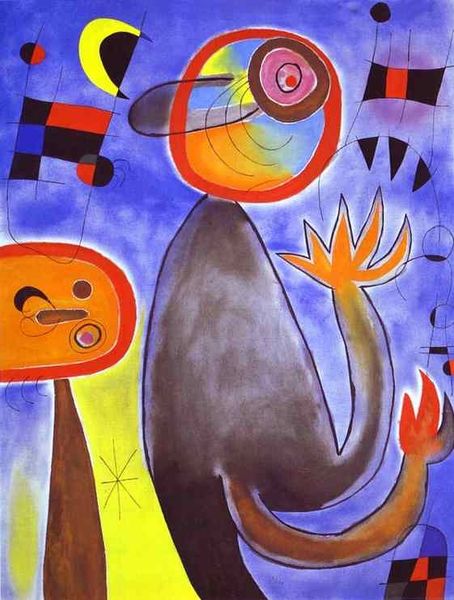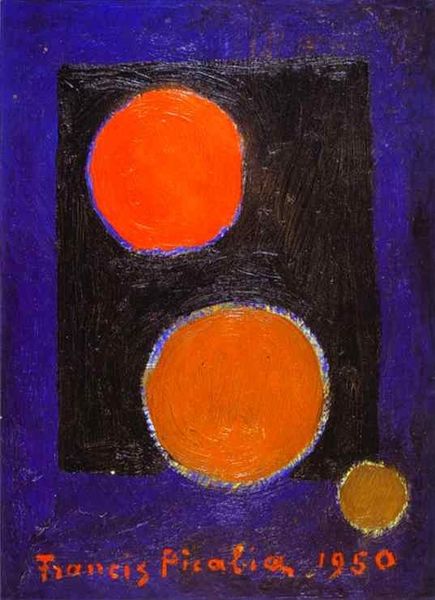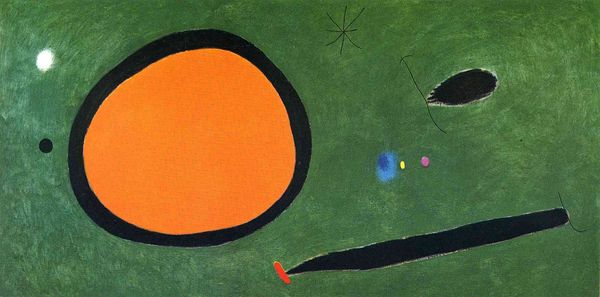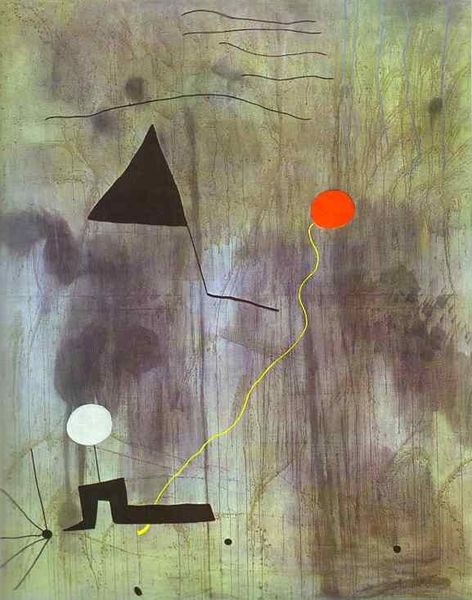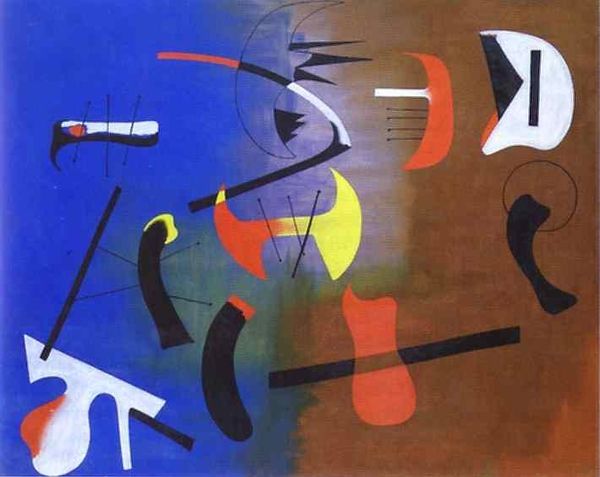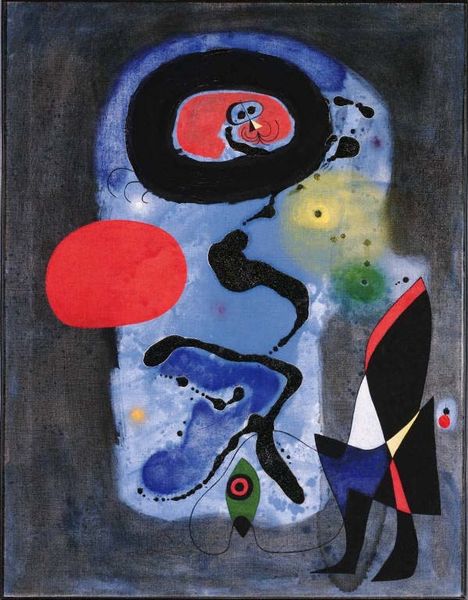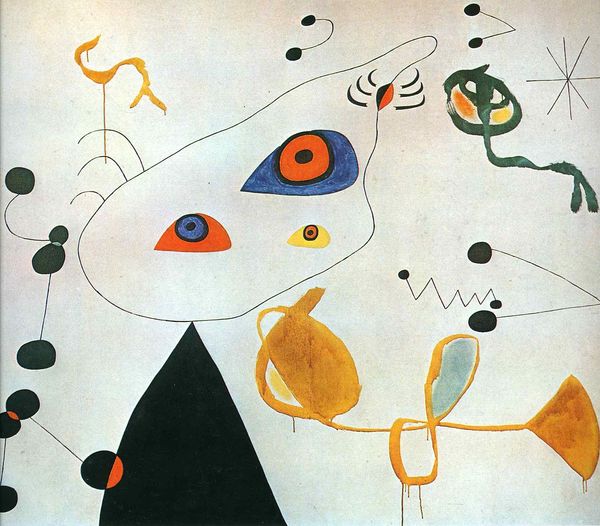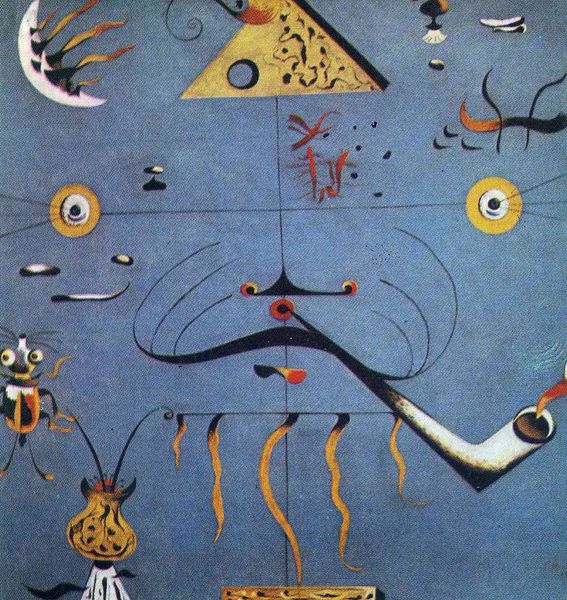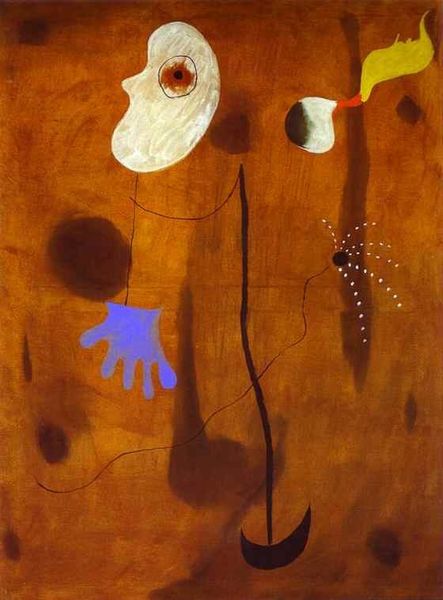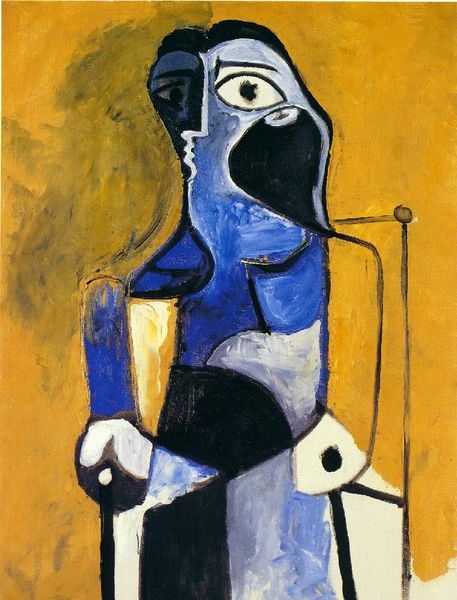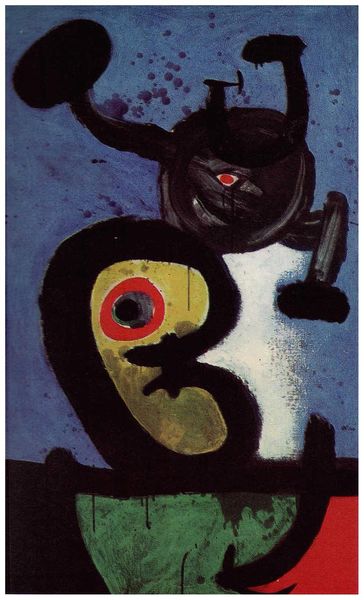
painting, acrylic-paint
#
portrait
#
abstract-expressionism
#
painting
#
acrylic-paint
#
figuration
#
geometric
#
abstraction
#
surrealism
#
modernism
Dimensions: 65 x 50 cm
Copyright: Joan Miro,Fair Use
Editor: So, here we have Joan Miró's "Woman in Front of the Sun" from 1950, rendered with acrylic paint. It’s a curious piece. The abstracted figure and stark geometric shapes create a childlike yet unsettling effect. What do you see in this piece, and how do you interpret the symbols he employs? Curator: I see a ritualistic dance, a primal invocation. The sun, depicted as a vibrant orb, clashes beautifully with the somber, almost volcanic figure. Notice how Miró uses stark contrasts – the hard lines of the stars against the figure’s organic curves. Consider this: The “woman” isn't merely a woman but perhaps a representation of primordial feminine power, drawing energy from the sun. Do you feel the figure's posture as a kind of receptivity or assertion? Editor: I can see that, actually, especially how the figure's arms seem to reach up, inviting the sun’s energy. But the single, all-seeing eye also feels a bit ominous, like it is a guardian of a secret ritual. Curator: Precisely! The eye, a recurring motif in Miró's work, often symbolizes perception, but also vulnerability. The whole image could speak to cultural memories, a re-imagining of ancient solar deities, or perhaps a reflection on post-war anxieties filtered through a subconscious dreamscape. It makes you wonder about the survival of symbols across cultural boundaries, doesn't it? Editor: It really does! The painting definitely speaks to something deeper than just a simple representation. It feels almost totemic. Thanks for showing me how to view the piece differently. Curator: My pleasure! Exploring the enduring power of symbols gives art its lasting resonance, don’t you think? It makes every artwork a repository of cultural memory.
Comments
No comments
Be the first to comment and join the conversation on the ultimate creative platform.

